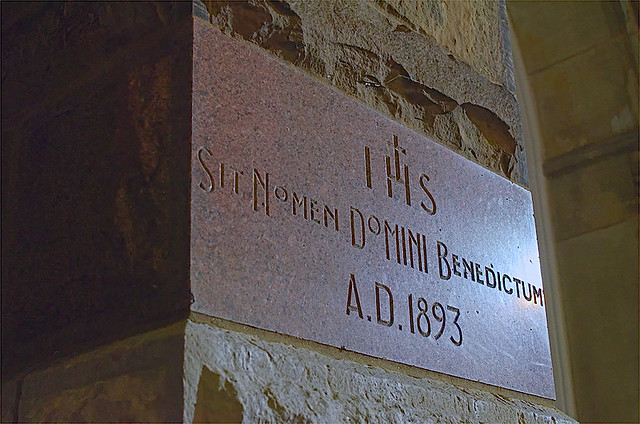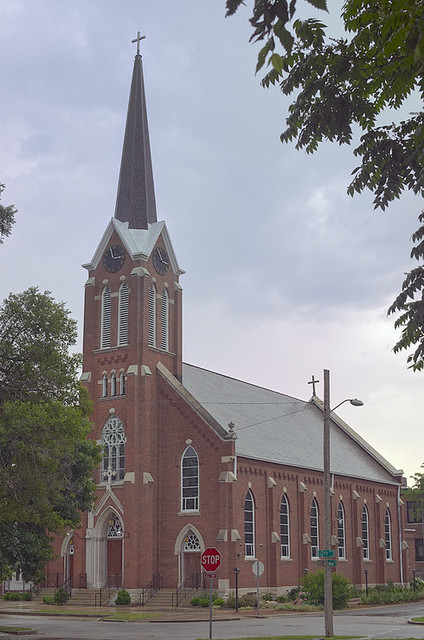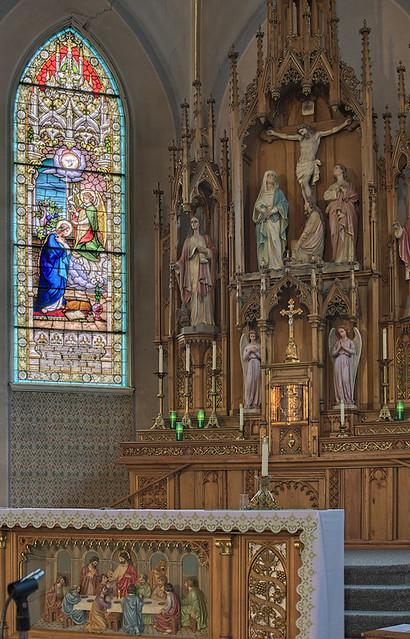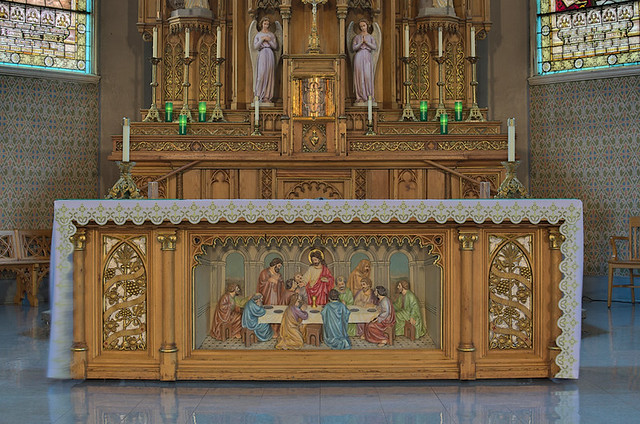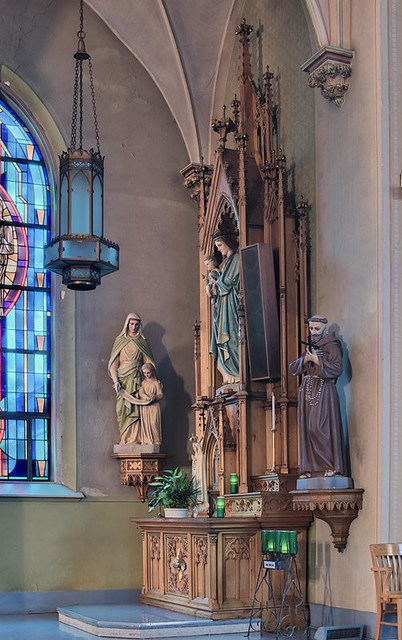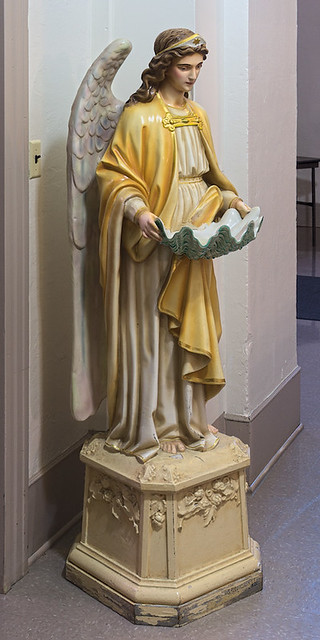
From the church's website:
St. Clement Parish was founded on March 19, 1952, when Archbishop Joseph Ritter assigned Father Luke Naes as pastor. The six acres purchased by the Archdiocese of St. Louis from the Deutschmann family in 1951 were augmented by an additional three and one-half acres in 1955.According to the 2012 Status Animarum, or ecclesiastical census, the parish has 4,256 members.
Initially, Mass was celebrated at St. Agnes Home on Manchester and Warson Roads on Sundays and Holy Days and at the temporary rectory at 1134 Bopp Road on weekdays. Ground was broken on July l9, 1953, for the first structure on the premises: the eight classroom school, the cafeteria, and the temporary church. Within a few years, an eight-room addition was added to the school and the rectory was built.
By 1959, the parish had grown to 400 families and the school enrollment peaked at 683 students. The Sisters of the Most Precious Blood (O'Fallon), who staffed the school, had been living in quarters within the school building, and the decision was made to construct a convent. The sisters took up residence in their new quarters on Passion Sunday 1960. In 1965, the church was built and the former church was converted into a gymnasium…
The name of the church’s city, Des Peres — French for ‘of the fathers’ derives its name from the River des Peres, a watercourse that has or had its headwaters in this area. The river itself gets its name from a Jesuit mission to the Kaskaskia tribe, who founded a temporary settlement in 1700 at the river's mouth.

Saint Clement of Rome — Pope Clement I — ascended to the throne of Peter in A.D. 92 and — like all of the early Popes — died a martyr's death in A.D. 99. He is mentioned in the Roman Canon of the Mass, and his feast is celebrated on November 23rd in the Roman calendar. His writings can be found here (Latin) and here (English). He is a patron to sailors, stone cutters, and sick children.
See also: Chapel at Saint Clement of Rome.
Address:
1510 Bopp Road
Des Peres, Missouri 63131


